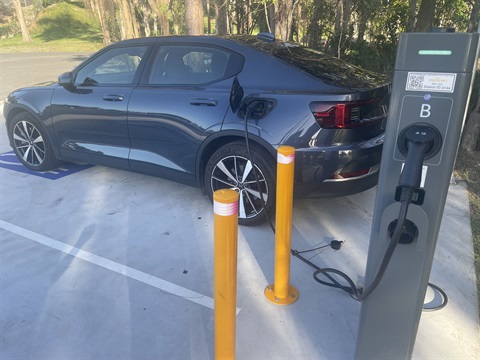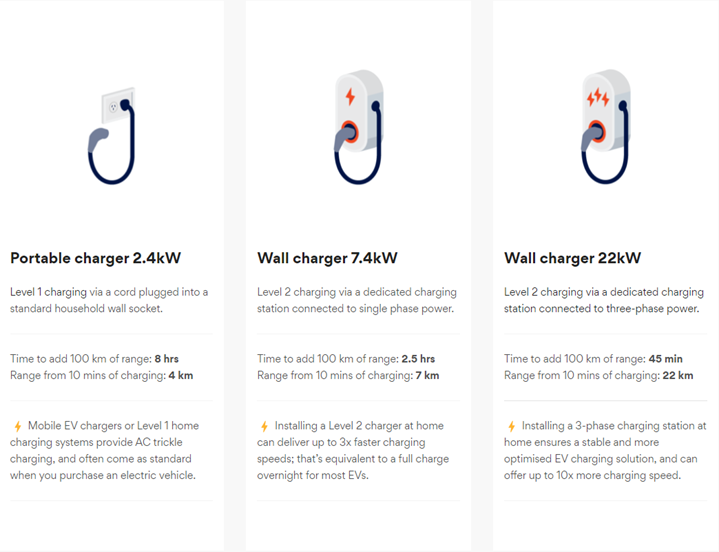Electric vehicles - what is the right type of car for you?
Published on 01 October 2024

With more electric vehicles on the roads every year, you might be wondering about if it's time for you to get one, and if so, which type would suit your needs the best, what's the best way to charge your car at home, and what do you need to consider when you want to take longer trips?
New electric vehicle (EV) purchases in Australia more than doubled in 2023, compared to 2022, with the total number of EVs on Australian roads now exceeding 180,000. This growth continues the trend of doubling of the new EV market every year since 2020.

What are the different types of Electric Cars?
Understanding the EV landscape can be quite complex, with a range of issues for potential owners to consider, including:
- Understanding the various types of EVs
- What is needed to own and charge an EV
- The logistics and considerations needed for taking longer trips
Hybrid Electric Vehicles
A Hybrid Electric Vehicle (Hybrid) is currently the most common type of electric vehicle. Hybrids combine a traditional petrol engine with a battery and electric motor to reduce fuel consumption. The battery in the hybrid is charged through driving so they never need to be plugged in.
The three bestselling Hybrid Vehicles in Australia in the first half of 2024 are the:
- Toyota RAV4 (23935 sold)
- Toyota Camary (10266 sold)
- Toyota Corolla (9561 sold)
Plug-in Hybrid Electric Vehicle
Like a hybrid, Plug-in Hybrids feature a petrol engine that works in tandem with an electric motor. Here though, the battery is bigger, allowing a Plug-in Hybrid to drive anywhere from 40 to 100km on electric power alone. As the name suggests, Plug-in Hybrids need to be plugged in to recharge the battery.
The three bestselling Hybrid Vehicle in Australia in the first half of 2024 are the:
- Mitsubishi Outlander (2422 sold)
- Mitsubishi Eclipse Cross (1409 sold)
- Mazda CX-60 (698 sold)
Battery Electric Vehicle
Battery Electric vehicles feature a large battery array that powers one or more electric motors. They have driving ranges of anywhere between 250 to 600km. BEV’s require charging, either at home or at a public charging station.
The bestselling Battey Electric vehicles in Australia this year are the:
- Tesla Model Y (12516 sold)
- Tesla Model 3 (10600 sold)
- BYD Seal (4092 sold)
What is required to install an EV Car Charger at home?
Overall, there are not many requirements when it comes to installing an EV car charger at home.
In Australia, it is necessary to have a licenced electrician to install an EV charger, just like a power point or other fixed electrical equipment. However, you do not need to be licensed electrician to use the portable type of EV charging cable that plugs into a standard power point.
It is important to install your EV charger where it is safe - it is recommended to install your electric car charger under cover or in a garage, but it can also be placed outdoors if required. It is always best to talk to your energy provider or a qualified electrician if you are unsure.
Types of EV Car Chargers available.
An EV can be charged as easily as a mobile phone. However, not all EVs and not all chargers are created equally. A dedicated electric vehicle charger can power your vehicle 3-10 times faster than a basic EV charging cable.

How is Kempsey Council supporting the uptake of electric vehicles?
Public charging is available in the Kempsey Shire with Council managed and grant funded chargers. These chargers are located at,
- Back Creek in South West Rocks
- The Slim Dusty Centre
- The Museum and Cultural Centre Playground, South Kempsey (Coming Soon)
For more information about Electric Vehicles, please visit these websites.